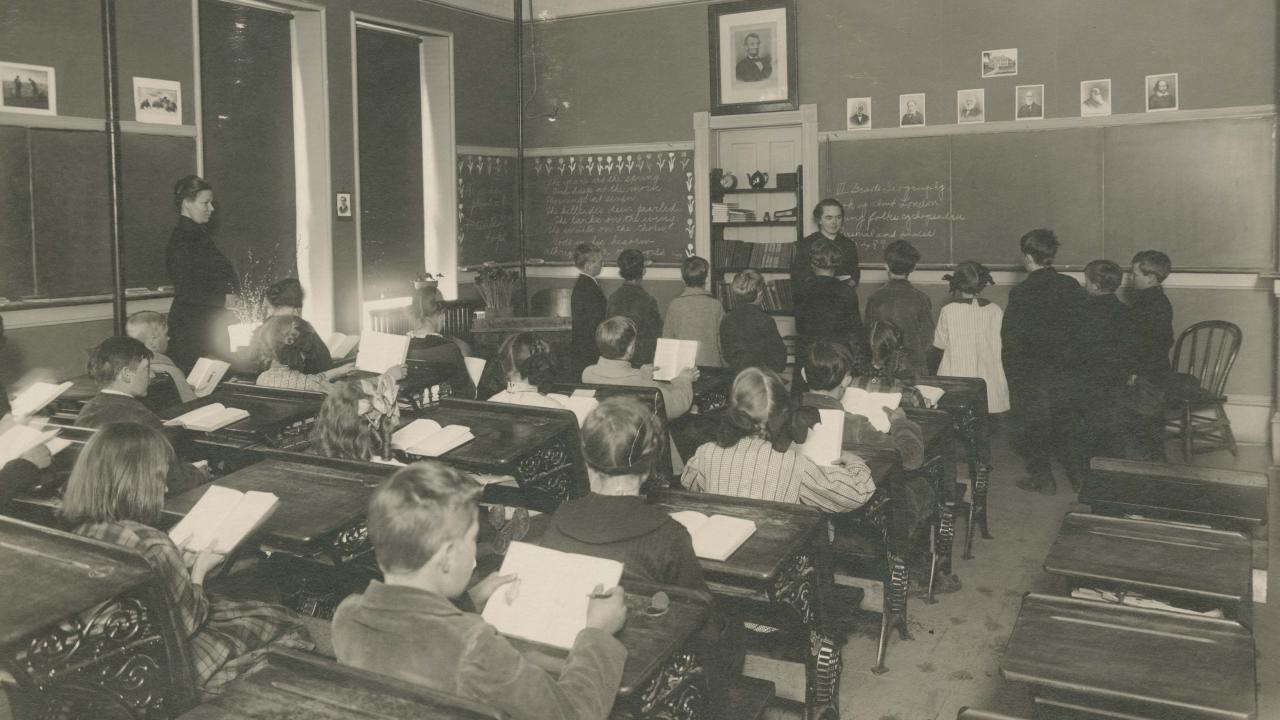Pictured: The first Model School, located in Old Main, Room Two.
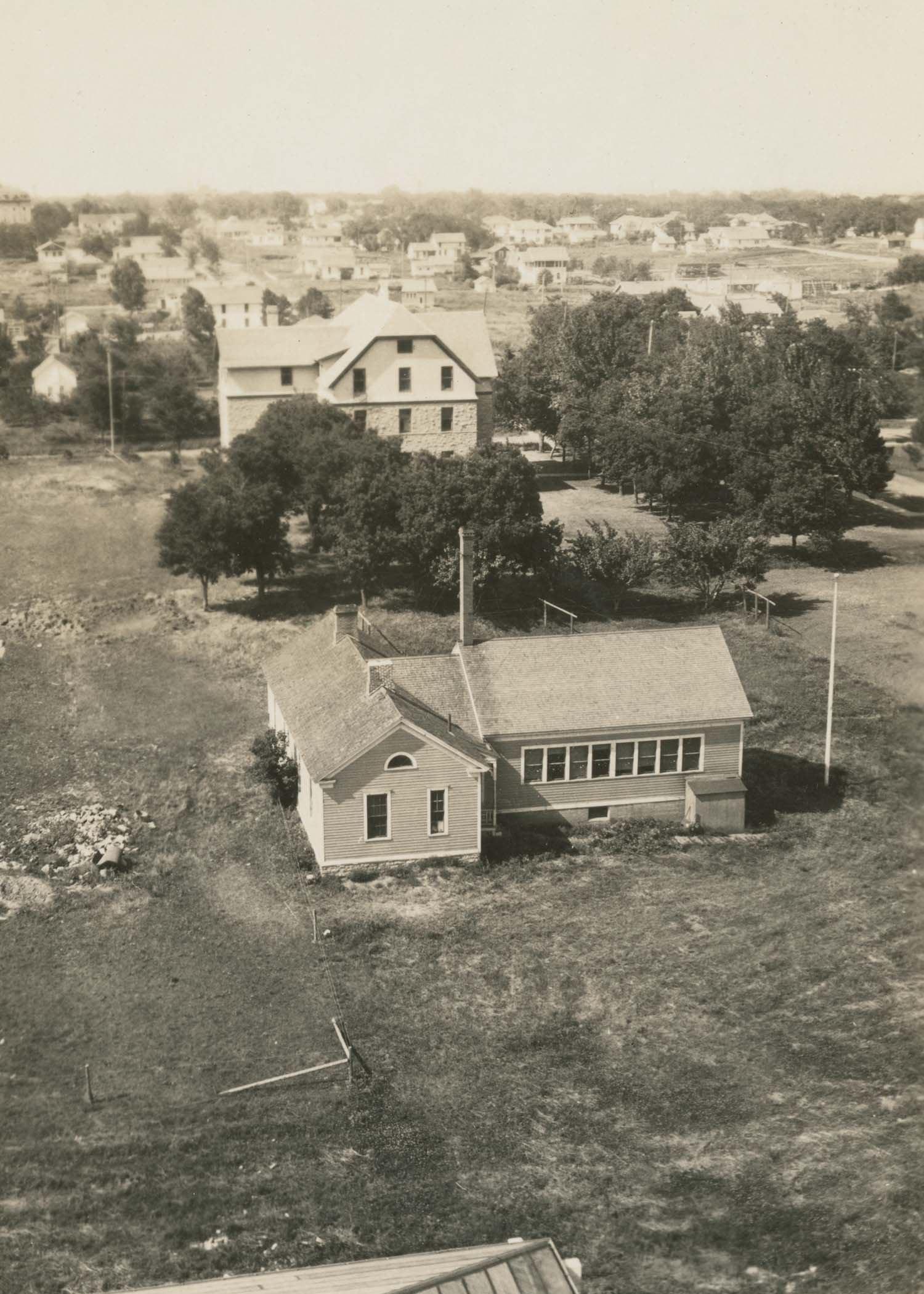
At Augustana University, Viking Bold isn’t just a catchphrase. Long before the university began its Journey to 2030, the college had been embarking on “bold” endeavors. Dating back to the early 20th century, Lutheran Normal School (which would later merge with Augustana College) was providing experiential learning for future elementary school teachers. “The Model School” or “Campus Training School” was created to bridge the gap between normal school and higher education.
As Lynwood E. Oyos laid out in A Noble Calling, when The Model School opened its doors in Sioux Falls in 1911, it had 15 students in grades one through seven who lived in neighborhoods near campus. For many years, the number of students held steady at around 40-55 first through eighth graders. At that time, around 55-75 “practice” or student-teachers taught more than a dozen classes in very tight quarters. At its peak in 1935, The Model School had 97 students.
Established 110 years ago, much of The Model School’s history has been lost. There’s no one alive who can talk about the activities that took place in “Classroom Two” in Old Main, before the school began pouring into the former hospital on campus in 1918. And, there’s only a small number of people who can recall its last years of existence before the school turned off the lights in May of 1943. Ninety-seven-year-old Harriet Hybertson is one of them.
The Model School Student-Teacher
“I graduated from Augustana Academy in Canton, South Dakota, so it was normal to go from one Augustana to another. Besides that, it was near my home and it was a church-affiliated school,” said Hybertson, former Model School student-teacher and Augustana College professor of education.
Hybertson grew up on a farm north of Centerville, South Dakota, and attended a country school in Turner County. The 97-year-old, who currently resides in Sioux Falls, came to Augustana in September of 1941. Under the guidance of two faculty members, Hybertson was a student-teacher at The Model School her sophomore year of college while taking the 2-year collegiate State Certificate Course.
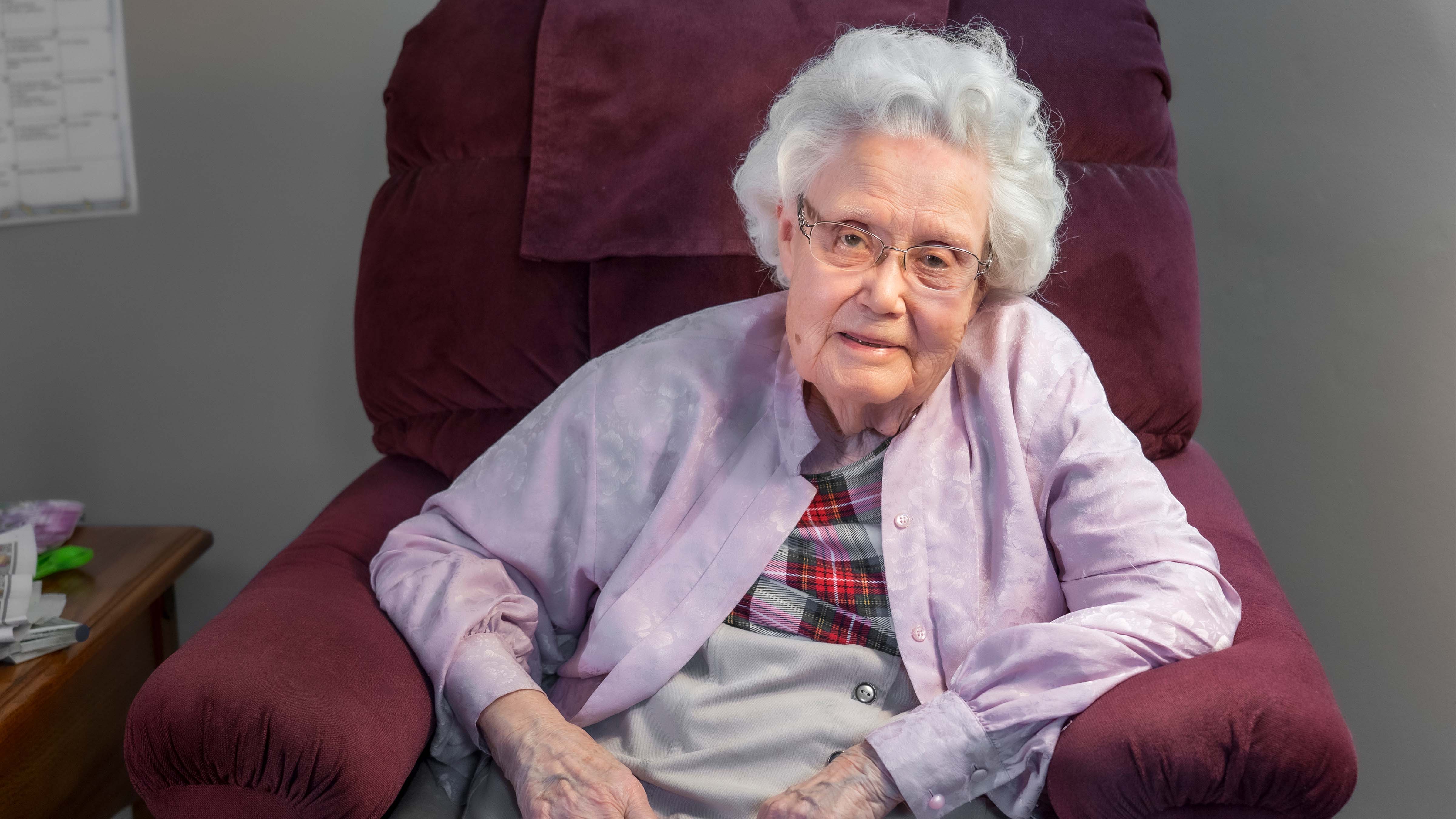
“The 2-year elementary program was a good mixture of liberal arts and education courses,” said Hybertson. “It’s possible we had a greater taste of the liberal arts because we had to meet state requirements and you had to have certain courses. Not every major took courses in art or music, but 2-year elementary (education majors) did.”
Hybertson recalled taking theory courses from Miss Hilda Dahl, who supervised The Model School and served in other capacities at Augustana for nearly 30 years.
“Miss Dahl was an experienced teacher in the elementary grades and very capable of preparing students to become teachers. There were also two full-time critic teachers in The Model School. (C.A.) Louise Hauge was the critic teacher for grades one through 4, and Miss (Mathilda) Pederson was the critic teacher for grades four, five and six,” said Hybertson. “I worked for Louise Hauge in The Model School under the National Youth Agency (NYA) for 10 cents an hour.”
According to Hybertson, The Model School was a small community of children — grades one through six at the time, with around seven to eight students in each grade. Students took courses in the biological and physical sciences, English, U.S. history, religion, political science, speech and more.
“We covered quite a few subjects, and taught many of the subjects in many grades,” said Hybertson, who recalls the Alice and Jerry and Dick and Jane reading programs being used in the classrooms.
“We had to do everything by hand. There were no machines, so we used lots of posters, crafts, pictures and newspapers. The blackboards and handmade flannel boards were standard equipment.”
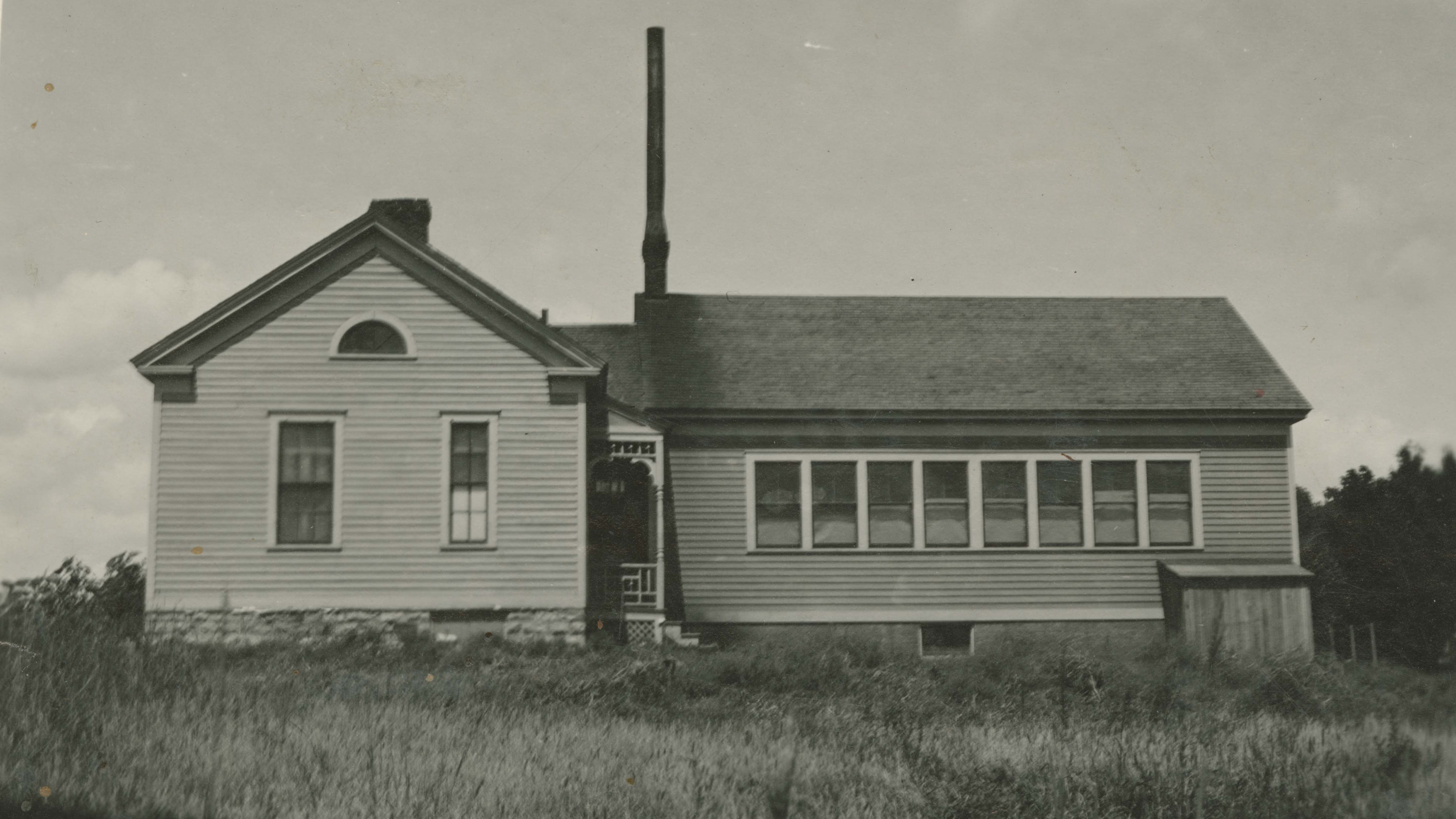
While the hands-on learning experience was beneficial and the program prepared the student-teachers well in a war-time period, she also recalls teaching at the time, “difficult.” The United States’ involvement in World War II was new, with the attack on Pearl Harbor taking place just a few months after Hyberston started classes at Augustana.
“Almost all activities were cancelled. The college changed schedules so we had classes six days a week to have graduation earlier than what was (originally) scheduled,” said Hybertson.
Many of the children Hybertson was teaching saw their fathers go off to war and their mothers were home alone with them.
Hybertson said, “The children were worried about their fathers and a lot of brothers and sisters had family killed in the service. Home life was disrupted.”
Due in part to the war, Hybertson was in the last class that student-taught at The Model School.
“There were almost no men on campus — most were drafted. Our population went down quickly and college programs changed everywhere. We were in a situation where we didn’t have much choice. The government allowed seniors to finish, but many younger men were drafted.”
The dwindling number of teachers also played a role in the school’s closure, as well as the dwindling number of children. More student-teachers began practicing in the Sioux Falls school system, just as more children were being sent to Lowell and Mark Twain Elementary Schools by their parents.
The Model School Students
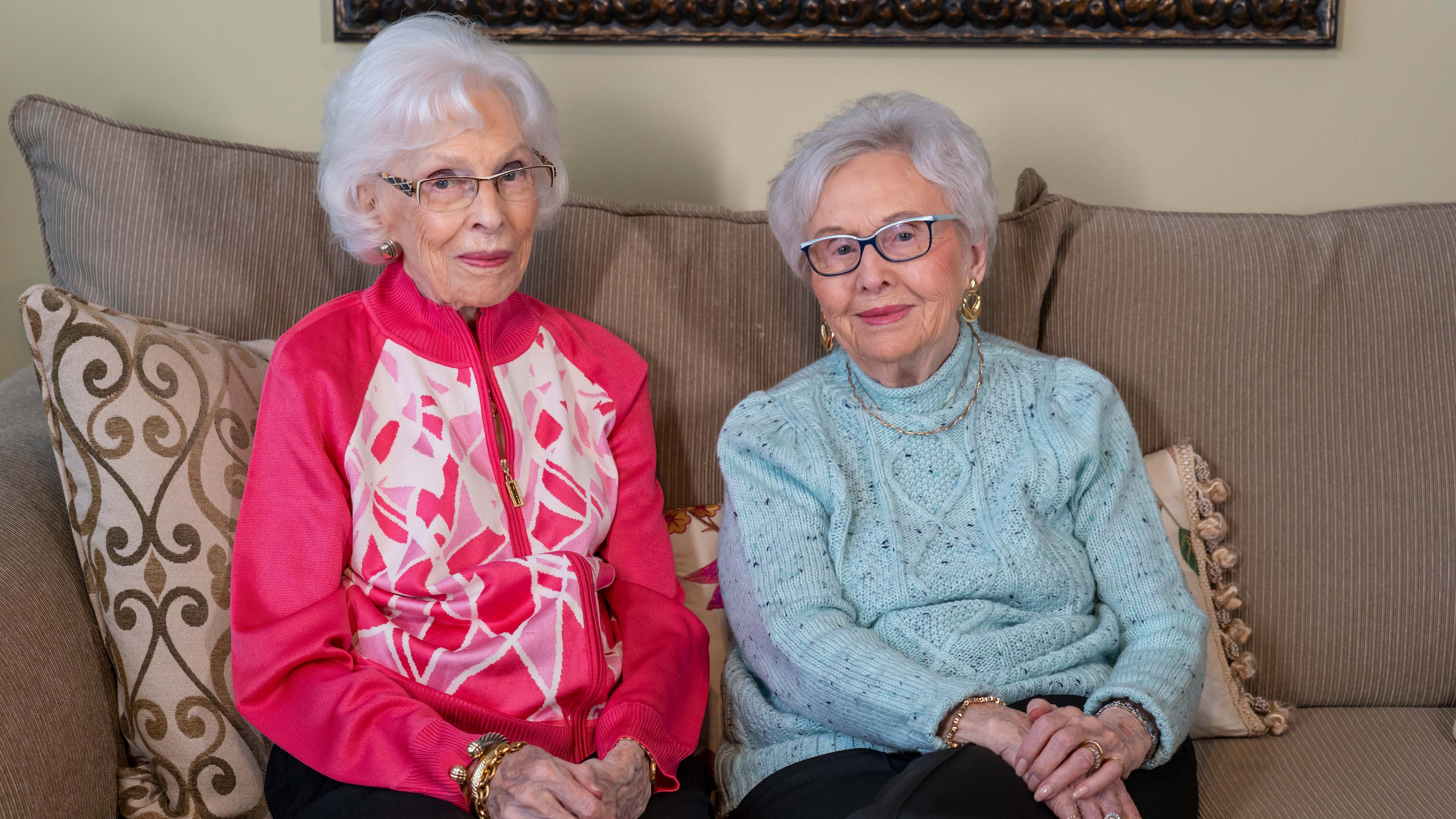
Jacqualine Sexauer and Arlette Scherschligt were among the students who had to transition from The Model School to Mark Twain Elementary after seventh and sixth grades, respectively, when the school no longer offered instruction in the later grades.
The Nerison sisters, now 96 and 93 years old, began attending The Model School when they were in first grade, in 1932 and 1930.
“We lived in the neighborhood.” Scherschligt continued, “... just automatically knew we were just going to go to Augustana Model School.”
With their house at 26th Street and Grange Avenue, the two walked a half dozen blocks to school together everyday, often stopping at what is now known as Sunny’s Pizzeria.
“That was our grocery store where we bought groceries, candy and stuff,” said Scherschligt.
The women recall learning their ABCs and how to write them in cursive, buying certain school supplies, participating in Rhythm Band, having the opportunity to dance in a college production and being at the top of the pyramid in gym class. The sisters also remember sharing classroom space with other grades. Contradictory to what’s been written about The Model School, they don’t recall feeling cramped.
“We didn’t know any better,” Sexauer chimed in.
“There was one room that must have had the first and second grade and then there was Miss Dahl’s office. There was a big room and it was split by a curtain and had the other grades in it,” Scherschligt said.
After attending Washington High School, Sexauer came back to Augustana for college, and soon after, was married. The younger of the two went to South Dakota State University for two years before getting married as well.
Scherschligt said, “We had a perfect life.”
“Absolutely,” Sexauer agreed.
After all these years, the sisters are still together, living a “perfect life” at a long-term care facility in Sioux Falls. Between the two, the sisters have seven children, 16 great-grandchildren and more than a dozen great-great grandchildren.
The Model School Legacy That Will Never Waiver
Dr. Julie Ashworth ‘75, assistant professor of education, and Becky (Hatch) Fiala ‘83, field placement coordinator, both joined the education department at Augustana in 2002. Before being asked to interview, the longtime faculty members at AU had never heard of The Model School. Some only recall the school as a dormitory known as “The Cottage,” and later, the site for personnel, postal and printing services.
“I’ve always known that Augustana was known as a teacher’s college, but I had no idea that this was a piece of our history — that we were doing this Model School back then. We have always longed to have a lab school on campus,” said Fiala, originally from Tracy, Minnesota, whose mother and father also graduated from Augustana College and went on to pursue long careers in education. “The fact that it existed for as long as it did … larger universities have tried over the years, but sustaining it is the tricky part.”
Ashworth, who still keeps in touch with Hybertson, says the former Model School student-teacher has never mentioned it.
“I had Harriet Hybertson as my teacher and Miriam Anderson (former AU professors emerita of education). They were both wonderful teachers and they gave me this great foundation in reading,” said Ashworth, who transferred to Augustana her junior year of college.
Ashworth and Fiala were both in awe that Augustana and the LNS were ahead of their time, setting a precedent for experiential learning practices that are the standard today.
“I just thought, ‘Oh my gosh, way back then they knew what we should be doing now.’ I mean, this is best practice. Pedagogy and teaching is best practice. No matter what the decade or the resources or the technology, these are foundational things, like excellence, passion, relationships, knowing your content and creating a community in your classroom,” said Ashworth. “And then I was jealous, actually. I wish we could have had that experience, and I wish it could have continued.”
While The Model School no longer exists, Augustana and its faculty remain steadfast in their search for the same excellence and entrepreneurial spirit.
“We are really committed to bringing faculty in who have that classroom experience,” said Ashworth. “And, our students are out in the field more than any other college.”
But, Fiala added, “We are fully committed to our students having all of their coursework done before they start the practice-teaching, student-teaching experience because we need them to be fully invested, and we know that our practice translates into success. That is probably one of the richest parts of our program — our track record and our history of preparing candidates who feel ready to teach and can demonstrate that.”
The Teacher Education Program at Augustana — announced as the Sharon Lust School of Education in 2020 — is known as one of the best in the Midwest, offering undergraduate degrees in special, elementary, secondary and all-grades education, as well as the opportunity to major in communications disorders. The university is home to one of only 13 sign language interpreting bachelor degree programs in the country to achieve accreditation through the Commission on Collegiate Interpreter Education (CCIE). In addition, Augustana offers an online Master of Education and Master of Education in Special Education for K-12 and Early Childhood Education.
“We are constantly reevaluating the courses that we offer to keep up with all the changes just in the field of education.”
The faculty members are also more determined than ever to recruit more diverse education majors to Augustana. Ashworth asked us to “imagine being a student, listening all day, every day of your entire education to a person that does not represent you in any way.”
Despite the ongoing challenges related to diversity, equity, inclusion, technology and social media, as well as the COVID-19 pandemic, the school of education put 19 new teachers into the field in the fall of 2020 and another 56 in the spring of 2021. There is the potential that nearly 60 candidates will graduate in 2022.
But the numbers do not bring complacency.
“Our students know very clearly that when they go to schools. They know that they are bringing Augustana into those schools, what we value, who we are as professionals,” Fiala said.
Something, they say, will never waiver.
